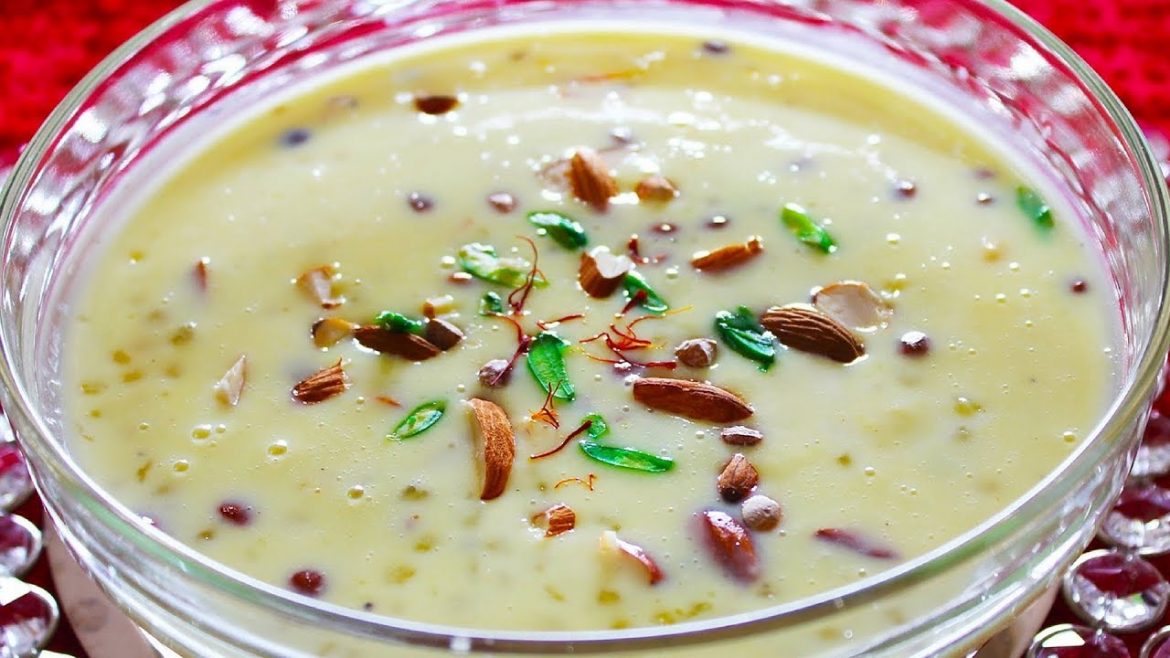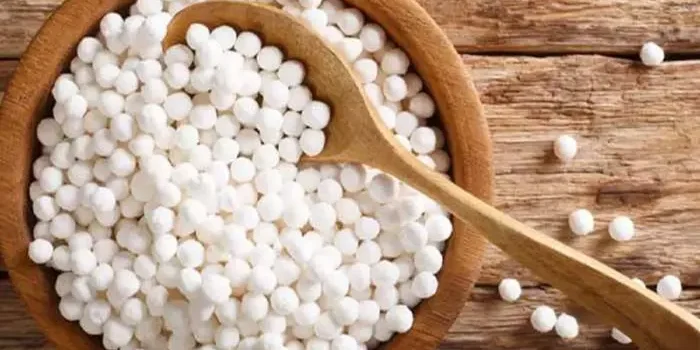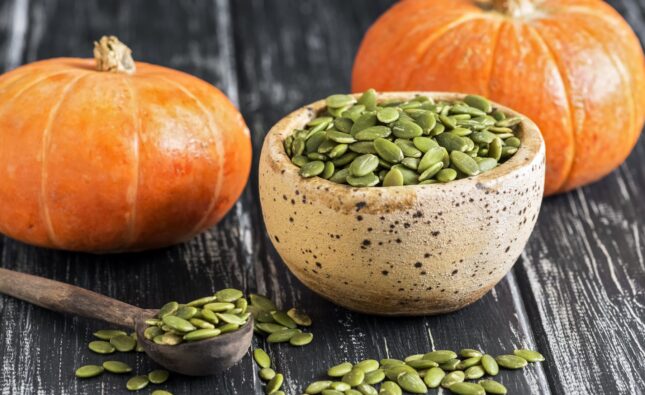Health Benefits of Sago (Sabudana)
Sabudana, also known as tapioca pearls or sago, is a starchy ingredient commonly used in various culinary dishes, particularly in Indian cuisine. While sabudana is a versatile ingredient, it does not possess significant health benefits on its own. However, it can be part of a balanced diet and provide some nutritional value. Here are some potential health benefits associated with sabudana:
1. Good Source of Carbohydrates:
Sabudana is primarily composed of carbohydrates, which are a crucial source of energy for the body. Consuming sabudana dishes can provide a quick and sustained release of energy, making it beneficial for individuals needing a quick boost of energy or athletes engaging in high-intensity activities.
2. Source of Energy:
Sago is primarily composed of carbohydrates, which are the body’s main source of energy. Consuming sago dishes can provide a quick and sustained release of energy, making it beneficial for individuals needing an energy boost, athletes engaging in high-intensity activities, or those recovering from illnesses.
3. Easy to Digest:
Sago is easily digestible due to its starch content and can be gentle on the stomach. This makes it suitable for individuals with digestive issues or those who are recovering from digestive ailments. It is often recommended during periods of fasting or as a soft food option for individuals with a sensitive digestive system.
4. Gluten-Free:
Sago is naturally gluten-free, making it a suitable alternative for individuals with gluten intolerance or celiac disease. It can be used as a substitute for wheat-based products in various recipes, allowing those with dietary restrictions to enjoy a wider range of dishes.
5. Provides Some Minerals:
While sago may not be a significant source of minerals, it does contain small amounts of calcium, iron, and phosphorus. These minerals play essential roles in maintaining bone health, oxygen transport, and overall cellular function. Although the amounts are relatively low, incorporating sago into a balanced diet can contribute to meeting the body’s daily mineral requirements.
6. Calorie-Dense:
Sago is calorie-dense, meaning it provides a relatively high number of calories per serving. While this can be beneficial for individuals needing to meet increased calorie needs, such as those recovering from illnesses or individuals with high energy requirements, it should be consumed in moderation for those trying to manage their weight.
7. Versatile Ingredient:
Sago is a versatile ingredient that can be used in a variety of dishes. It is often used to make khichdi, kheer (pudding), vada, or thalipeeth. By incorporating other nutritious ingredients like vegetables, nuts, or legumes into these dishes, the overall nutritional value can be enhanced.
8. Cooking and Preparation:
Sago is typically soaked in water prior to cooking, allowing it to absorb moisture and soften. It can be boiled, steamed, or simmered until the pearls become transparent and soft. The cooking time varies depending on the size of the pearls and the desired texture.
Despite these potential benefits, it is important to note that sabudana is mainly composed of carbohydrates and lacks significant amounts of protein, dietary fiber, vitamins, and other essential nutrients. Therefore, it should be consumed in moderation as part of a well-rounded diet that includes a variety of nutrient-rich foods. Individuals with specific dietary restrictions or health conditions should consult with a healthcare professional or registered dietitian for personalized advice.
Nutrient Value of Sago (Sabudana)
Sago, also known as sabudana or tapioca pearls, is primarily composed of carbohydrates. It is low in protein, fat, and dietary fiber. While sago does not contain a significant amount of essential vitamins and minerals, here is an approximate nutrient profile for 100 grams of dry sago:
- Calories: 351 kcal
- Carbohydrates: 87.7 grams
- Protein: 0.2 grams
- Fat: 0.2 grams
- Fiber: 0.9 grams
- Calcium: 20 mg
- Iron: 0.9 mg
- Phosphorus: 2 mg
- Potassium: 12 mg
- Sodium: 6 mg
While sago may not offer a wide range of essential nutrients, it can still be enjoyed as part of a balanced diet when combined with other nutrient-rich foods. It is often used as a base ingredient in various dishes where the nutritional value is enhanced by adding vegetables, legumes, or proteins to create a more well-rounded meal.

Different Recipe of Sago (Sabudana)
1. Sabudana Khichdi: Ingredients:
- 1 cup sabudana (sago)
- 1/2 cup roasted peanuts, coarsely ground
- 1 green chili, finely chopped
- 1 tablespoon ghee or oil
- 1 teaspoon cumin seeds
- 1 medium-sized potato, peeled and diced
- Salt to taste
- Fresh cilantro leaves, chopped (for garnish)
- Lemon wedges (for serving)
Instructions:
- Rinse the sabudana under cold water until the water runs clear. Soak it in water for about 3-4 hours until it becomes soft and swells.
- Drain the soaked sabudana and keep it aside.
- Heat ghee or oil in a pan and add cumin seeds. Let them crackle.
- Add chopped green chili and diced potatoes. Sauté until the potatoes are cooked and lightly golden.
- Add the soaked sabudana and salt. Mix well and cook for a few minutes until the sabudana turns translucent.
- Add the ground peanuts and mix everything together.
- Garnish with chopped cilantro leaves and serve hot with lemon wedges.
2. Sabudana Kheer (Pudding): Ingredients:
- 1/2 cup sabudana (sago)
- 4 cups milk
- 1/2 cup sugar (adjust as per taste)
- 1/4 teaspoon cardamom powder
- Chopped nuts (almonds, cashews, pistachios) for garnish
- Saffron strands (optional)
Instructions:
- Rinse the sabudana under cold water until the water runs clear. Soak it in water for about 1 hour.
- Drain the soaked sabudana and keep it aside.
- In a deep pan, bring the milk to a boil.
- Add the soaked sabudana and simmer on low heat, stirring occasionally to prevent sticking, until the sabudana pearls turn translucent and soft (around 15-20 minutes).
- Add sugar, cardamom powder, and saffron strands (if using). Stir well until the sugar is dissolved and the kheer thickens slightly.
- Remove from heat and allow it to cool.
- Garnish with chopped nuts and serve the sabudana kheer chilled.
3. Sabudana Vada: Ingredients:
- 1 cup sabudana (sago pearls)
- 2 medium-sized potatoes, boiled and mashed
- 1/2 cup roasted peanuts, coarsely ground
- 2 green chilies, finely chopped
- 2 tablespoons chopped fresh coriander leaves
- 1 teaspoon cumin seeds
- 1/2 teaspoon ginger paste
- Salt to taste
- Oil for frying
Instructions:
- Rinse the sabudana under running water until the water runs clear. Soak the rinsed sabudana in enough water for 4-5 hours or overnight. The sabudana should soak up the water and become soft and swollen.
- Drain the soaked sabudana using a colander and let it sit for about 30 minutes to remove excess water. Ensure that there is no excess water remaining as it can make the vadas soggy.
- In a mixing bowl, add the drained sabudana, mashed potatoes, ground peanuts, chopped green chilies, chopped coriander leaves, cumin seeds, ginger paste, and salt. Mix everything well until all the ingredients are evenly combined.
- Divide the mixture into small portions and shape them into round patties or vadas. You can wet your hands with a little water to prevent sticking.
- Heat oil in a deep frying pan or kadai over medium heat. Once the oil is hot, carefully slide the vadas into the oil, a few at a time, without overcrowding the pan.
- Fry the vadas on medium heat until they turn golden brown and crispy on both sides. Flip them gently to ensure even cooking.
- Once the vadas are cooked, remove them from the oil using a slotted spoon and place them on a plate lined with absorbent paper to remove excess oil.
- Repeat the frying process for the remaining vadas.
- Serve the Sabudana Vadas hot with green chutney, tamarind chutney, or yogurt.
4. Sago Upma: Ingredients:
- 1 cup sago pearls (sabudana)
- 2 tablespoons oil
- 1 teaspoon mustard seeds
- 1 teaspoon cumin seeds
- 1/4 teaspoon asafoetida (hing)
- 1 green chili, finely chopped
- 1/2 inch ginger, grated
- 8-10 curry leaves
- 2 tablespoons roasted peanuts
- 2 tablespoons grated coconut (optional)
- Salt to taste
- Fresh coriander leaves for garnish
- Lemon wedges for serving (optional)
Instructions:
- Rinse the sago pearls under running water until the water runs clear. Soak the rinsed sago pearls in enough water for 3-4 hours or until they are soft and plump.
- After soaking, drain the sago pearls using a colander and let them sit for about 30 minutes to remove excess water. Fluff them gently with a fork to separate any clumps.
- Heat oil in a pan or kadai over medium heat. Add mustard seeds and let them splutter. Then add cumin seeds, asafoetida, green chili, ginger, and curry leaves. Sauté for a minute until the spices release their aroma.
- Add the drained sago pearls to the pan and mix well with the spices. Cook for 4-5 minutes, stirring occasionally, until the sago pearls turn translucent and cooked through.
- Add roasted peanuts, grated coconut (if using), and salt. Mix well and cook for another 2 minutes, allowing the flavors to blend together.
- Remove the pan from heat and garnish with fresh coriander leaves.
- Serve the Sago Upma hot as a breakfast or snack. You can squeeze some lemon juice on top before serving for added tanginess, if desired.
5. Sago Papad: Ingredients:
- 1 cup sago pearls (sabudana)
- Water for soaking
- Salt to taste
- Oil for deep frying
Instructions:
- Rinse the sago pearls under running water until the water runs clear. Soak the rinsed sago pearls in enough water for 2-3 hours until they become soft.
- After soaking, drain the sago pearls using a colander and let them sit for about 30 minutes to remove excess water. Fluff them gently with a fork to separate any clumps.
- Transfer the drained sago pearls to a mixing bowl and add salt to taste. Mix well to ensure the salt is evenly distributed.
- Heat a non-stick pan over medium heat. Spread a thin layer of the sago pearls on the pan, forming a circular shape. The layer should be thin and even.
- Cook the sago layer on low heat until it dries out and becomes crisp. This will take time and patience as the moisture needs to evaporate completely. Flip the papad to cook both sides evenly.
- Once the papad is completely dry and crisp, remove it from the pan and let it cool. Repeat the process with the remaining sago pearls until all the papads are cooked.
- Once cooled, store the Sago Papads in an airtight container to maintain their crispness.
- When ready to serve, heat oil in a deep frying pan or kadai over medium heat. Deep fry the Sago Papads until they puff up and turn golden brown. Remove from the oil and drain on absorbent paper to remove excess oil.






